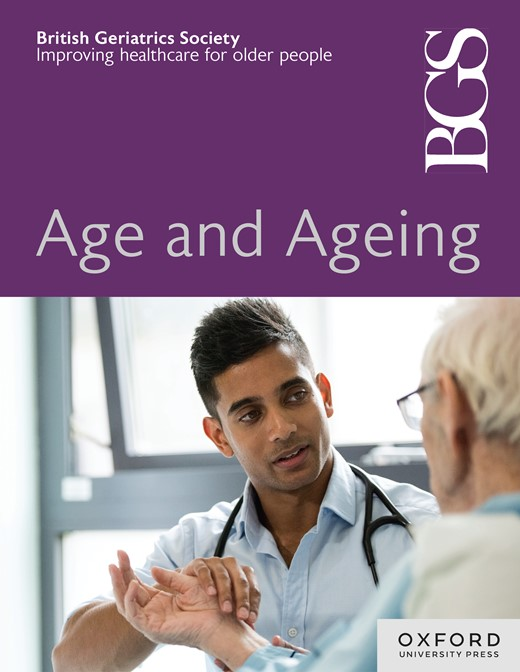3143积极和联系:利用场所加强中老年人的身体和社会活动
IF 6
2区 医学
Q1 GERIATRICS & GERONTOLOGY
引用次数: 0
摘要
体育活动和社会联系在健康老龄化中发挥重要作用。使用图书馆、公园和社区中心等设施可以促进体育活动、社会互动和社区建设。人们对老年人如何利用场所进行体育活动或社交活动知之甚少。这项研究旨在探索中老年人去的地方,以及为什么他们选择参加或不参加特定地方的体育和/或社会活动。方法对55 ~ 75岁社区居民进行半结构化访谈(n = 22;在2023年9月至2024年3月期间,来自苏格兰伦弗鲁郡和南拉纳克郡两个高度贫困社区的65.0±5.5岁)。采用基于系统的方法,我们探索了中老年人对场所的利用,以支持身体和社会活动。根据地形测量局的数据绘制的参与者所在社区的地图,例如描绘公园的地图,被用来指导访谈。结果参与者的身体活动量、虚弱程度和孤独感各不相同。体育和社会活动场所包括社区中心、绿地、健身房、俱乐部、宗教建筑、商店和餐饮场所。社会促进因素包括在社区中心等多用途空间开展包容性的、宣传良好的活动,以促进代际联系、社区凝聚力和社会参与。物理因素包括可达性和便利性的重要性、移动友好的设计和多样化的交通选择。场地利用的障碍包括:延续年龄歧视情绪的活动、体力和社会活动成本的上升,以及恶劣天气和日照减少等季节性障碍。提供负担得起的、有吸引力的活动,以及集娱乐、学习和社会互动于一体的多功能空间,以促进老年人的代际和社会联系是至关重要的。此外,基础设施和交通应优先考虑可达性,而社区应促进尊重、包容和积极参与社会。本文章由计算机程序翻译,如有差异,请以英文原文为准。
3143 Active and connected: place utilisation to enhance physical and social activity in mid-to-older adults
Introduction Physical activity and social connectedness play an important role in healthy ageing. Access to facilities such as libraries, parks, and community centres can facilitate physical activity, social interaction, and community building. Little is known about how older adults use places for physical or social activities. This study aimed to explore the places mid-to-older adults go to, and why they choose to engage or not engage in physical and/or social activities in particular places. Methods Semi-structured interviews were conducted with community-dwelling adults aged 55–75 years (n = 22; 65.0 ± 5.5 years) from two communities with high levels of deprivation in Scotland, Renfrewshire and South Lanarkshire between September 2023 and March 2024. Taking a systems-based approach, we explored place utilisation among mid-to-older adults to support physical and social activity. Maps of participant’s local community populated from Ordnance Survey data, such as depicting parks, were used to guide the interviews. Results Participants varied according to levels of physical activity, frailty, and loneliness. Places for physical and social activities included community centres, green spaces, gyms, clubs, religious buildings, shops and places for eating and drinking. Social enablers to place utilisation included having inclusive, well-advertised activities in multi-purpose spaces like community centres to foster intergenerational connections, community cohesion, and social engagement. Physical enablers included the importance of accessibility and convenience, mobility-friendly design, and diverse transport options. Barriers to place utilisation included activities that perpetuated ageist sentiments, the rising costs of physical and social activities, and seasonal barriers such as poor weather and reduced daylight. Conclusions It is essential to provide affordable and engaging activities, as well as versatile spaces that combine recreation, learning, and social interaction to foster intergenerational and social connections for older adults. Additionally, infrastructure and transportation should prioritise accessibility, while communities should promote respect, inclusion, and active participation in society.
求助全文
通过发布文献求助,成功后即可免费获取论文全文。
去求助
来源期刊

Age and ageing
医学-老年医学
CiteScore
9.20
自引率
6.00%
发文量
796
审稿时长
4-8 weeks
期刊介绍:
Age and Ageing is an international journal publishing refereed original articles and commissioned reviews on geriatric medicine and gerontology. Its range includes research on ageing and clinical, epidemiological, and psychological aspects of later life.
 求助内容:
求助内容: 应助结果提醒方式:
应助结果提醒方式:


